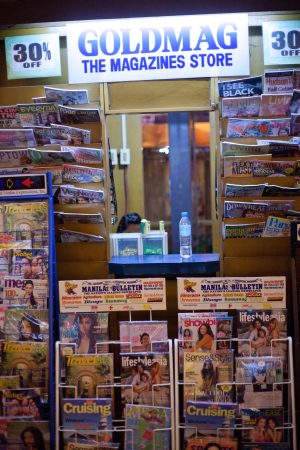Press freedom in Southeast Asia continues to range from the strained to the outright repressive, according to the latest edition of Reporters Without Borders (RSF)’s annual media freedom index. The World Press Freedom Index, in which the Paris-based press watchdog assesses the state of journalism in 180 countries and territories, was published yesterday to coincide with World Press Freedom Day.
According to a statement accompanying the release of this year’s index, the past year saw several dramatic rises and falls, which RSF put down to “the rapid effects that the digital ecosystem’s fake content industry has had on press freedom.”
“The World Press Freedom Index shows enormous volatility in situations, with major rises and falls and unprecedented changes, such as Brazil’s 18-place rise and Senegal’s 31-place fall,” RSF Secretary-General Christophe Deloire said in the statement. He put this down to “increased aggressiveness on the part of the authorities in many countries and growing animosity towards journalists on social media and in the physical world,” as well as the growth of the fake content industry.
The report’s picture of Southeast Asia is largely unchanged from last year, with the press situation rating “very serious” in three nations, and “difficult” in seven more. Once again, Timor-Leste was the only nation to rank higher, coming in, astonishingly, in 10th position on the index, ahead of established democracies such as New Zealand (13), Canada (15), United Kingdom (26), and the United States (45). RSF described its jump from 17th position last year into the top 10 as “one of this year’s surprises,” putting it down to the country’s political system, which divides powers between a prime minister and president.
The main positive mover – and an example of the volatility mentioned above – was Malaysia, which jumped from 113th position last year to 73rd this year. The report did not offer much of an explanation for the jump. It seems that despite the government retaining “a draconian legislative arsenal to restrict press freedom,” the country’s media landscape has relaxed to a certain degree due to the creation late last year of a new, more progressive coalition government under Prime Minister Anwar Ibrahim.
Two other Southeast Asian nations made modest increases – the Philippines, which rose from 147th place to 132nd, and Thailand (115-106) – though given that RSF continues to note the serious challenges facing the media in both of these countries, much of this likely was to do with declines by other countries.
Once again, there was a solid contingent of Southeast Asian countries propping up the lower reaches of the index. The worst performer – indeed, the third-most repressive nation in the world, after North Korea (180) and China (179) – was Vietnam, where “independent bloggers and journalists are the only sources of freely reported news and information.” Indeed, they pay a high price for it, with RSF reporting that Vietnam is the third-greatest jailer of journalists in the world.
It says something about the hermetic nature of the media landscape in Vietnam that it rated even lower than Myanmar, which saw a steep decline in press freedom last year due to the military coup and subsequent violent crackdowns on the press and civil society. “With significant risks of being jailed, tortured, or murdered, journalism is an extremely dangerous profession in Myanmar,” the report states. It notes that the country has become the world’s second-largest jailer of journalists and the largest relative to its population.
One-party Laos (160th) continued to maintain a close hold over the press, while in Cambodia (147), which has steadily slid down the rankings over the past decade, “governmental persecution of independent media has intensified in the run-up to elections that are due to be held in the coming months.” Much the same was true of Brunei (144th), where the leading daily newspapers are directly owned by the family of absolute monarch, Sultan Hassanal Bolkiah, and self-censorship among journalists is the norm.
As last year, even Southeast Asia’s nominally democratic nations were far from open in terms of press freedom, with concentrated ownership of media organizations and restrictive laws playing their part in restricting journalists and media workers.
In the Philippines, which rose from 147th position to 132nd in this year’s index, RSF noted that the country’s “extremely vibrant” press is frequently subjected to “targeted attacks and constant harassment” by both the government and regional powerbrokers. RSF said that Indonesia’s (108) role as a pioneer of press freedom in Southeast Asia is balanced by the adoption of a new Penal Code late last year that “poses new threats to the free exercise of journalism, with several provisions relating to blasphemy and articles meant to fight against ‘fake news.’” It also noted the military’s near-total blackout on media reporting on the separatist insurgency in Papua, where Indonesian soldiers have been accused of gross human rights abuses.
Thailand (106), which is holding an election later this month, has a vibrant media with a crop of new publications offering critical coverage of the government. But harassment of these publications is common, to say nothing of the taboo against talking about the Thai monarchy, enforced by Article 112 of the Penal Code – the so-called lese-majeste law. RSF described the law as “a permanent threat hanging over every media outlet.”
As for Singapore (129), it “boasts of being a model of economic development but it is an example of what not to be in regard to freedom of the press, which is almost non-existent.”
The curious thing about this year’s index is that all but two Southeast Asian nations – Cambodia and Vietnam – rose in RSF’s rankings, which would be tempting to take as a sign of a slight relaxation of the media moderation. But given the downward trajectory of the past decade, it is hard to know whether these results, Malaysia possibly excepted, represent anything more than statistical noise.

































